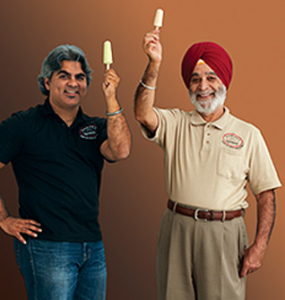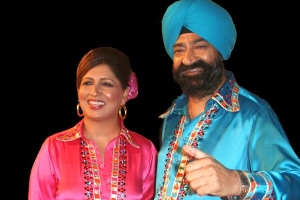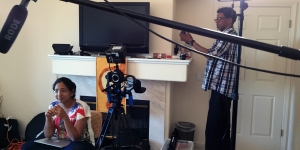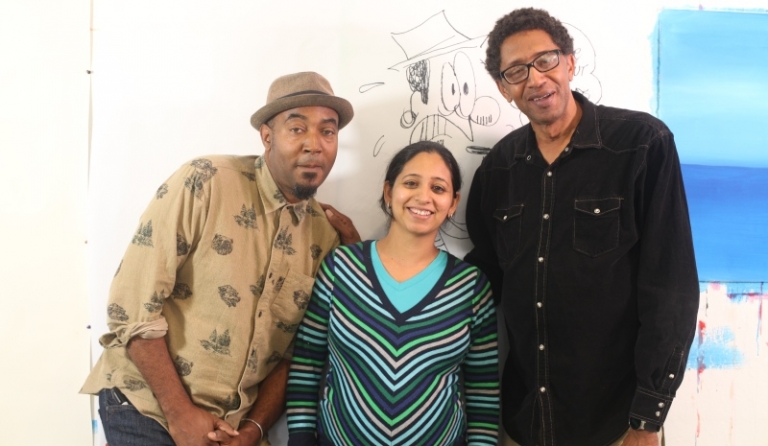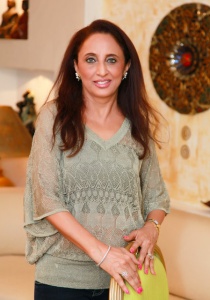Kaurina’s – A Story of Resilience

Exotic: A Punjabi Wedding Planner in Thailand
August 10, 2015
NewLoveTimes Interviewed Me
April 10, 2016Kaurina’s was established in 2000 in Texas, USA, by Hari Singh.
He took his wife Jas Kaur’s recipe and transformed it into a kulfi business. It stays true to tradition by using minimal ingredients and even has an authentic Punjabi taste.
Recently they have expanded beyond kulfi to Tarka Masala to cater to the growing need and interest in Punjabi and Indian cooking.
In a short period of time, Kaurina’s went from a small home-based operation to a full-fledged manufacturing operation, selling not only at the local Punjabi, Indian and Pakistani grocery shops in and around Texas, but also in big stores such as HEB, Fiesta and now they are even sold in many of the Costco stores on the West Coast.
Hari Singh has come a long way from being a geologist to being a full-time entrepreneur in the food industry. His son Aman Singh who joined him in 2004 also took a leap of faith from being an engineer to being “The Kulfi Man”, as he calls himself. Both have had great success with Kaurina’s and are all set to take it to the next big level. Here is a glimpse into their journey, as I talk to father and son.
How did Kaurina’s Kulfi come into being?
Hari Singh (“HS“): Kulfi was not the first product that we worked on. There is a sauce called the Picante sauce. My wife made a version of that at home, it was Picante with a Punjabi Touch. We all loved it. We thought of turning it into a business.
But then it did not fly well at the business plan stage, since we did not have the knowledge of how to manufacture on a large scale. I was told that in the beginning we would have to make a sample of 10,000 bottles and we did not want to make that kind of investment, so we dropped that idea.
Aman Singh (“AS”): Kulfi was always my mom’s specialty. No dinner party was ever complete without kulfi. All our friends and relatives used to say that “Jas’s kulfi is the best”. People used to come from far and wide to taste my mom’s kulfi. It is then that we thought of making a business out of it.
We made a few samples and tested it in our local store and it sold out on the first day. Then we expanded to other stores, invested in a production site and the rest, as they say, is history.
How did you decide on the name ‘Kaurina’s’ ?
We brain stormed with quite a few names. We wanted a name which had Punjabi roots, but at the same time, it resonates with a broader audience. We also wanted a distinctly female sounding name as it sounds better and is also identifiable with moms who cook the most in any household. The Sikh name ‘Kaur’ — common to all Sikh women — was something that had all these qualities.
We added “ina” to it as it had more recognizable sound to it. You find a “Tina, Reena etc” in many cultures. This is how we decided on the name ‘Kaurina’s‘.
How did you manage to make inroads into Costco, HEB, Fiesta and other big stores?
Our plan was to participate in the trade shows. Before we headed off to them, though, we updated our packaging. We specially created a multi-pack to cater to the big stores. Then in 2010 in Anaheim (California) we participated in the trade show. One of the Costco buyers came to us and tried our product. She liked it and got us connected to the person in charge at Costco. The Costco buyer requested samples and then set up a meeting. The negotiations lasted over a year. Finally, we agreed to supply to 6 Costco’s. We also created special packaging for them. Now they want us to expand to the other Costco’s.
HEB and Fiesta contacted us through the distributor trade show that we attended in Jan 2011. In 2011 during the Fancy Food Show in New York, we were also contacted by the Union Market buyer; they have three stores in Brooklyn. She wanted us to supply them directly and remove all middle men.
So now we are beginning to expand our foot print beyond Texas into other regions. The journey has just begun.
How did you expand into the ice-cream line? Was there any fear of competition from the big brands like Nestle?
AS: Consumers wanted party-size tubs. Initially, I was a little hesitant in expanding our line, but my dad wanted to pursue this opportunity. We focused on getting our kulfi blend incorporated into the formulation. We also added new and differentiated flavors such as chikoo.
At present, there is no major pressure to compete with the major brands. We are competing with the smaller brands which are carried by Punjabi and Indian stores.
What role has your mom/wife played in the success of Kaurina’s, besides sharing her recipes?
AS: Mom has always been the back-bone of our family. She gave us all the support that we wanted. She kept her day job to support the family and to have a steady stream of income while we dabbled in business. My wife also supports us by continuing to work on her ‘day job’.
Where were you brought up and what were the early years like for you?
HS: I grew up in Punjab, mostly in Simla, along with five brothers and a sister. Then in 1953 my father, who used to work in the Punjab government, got transferred to Chandigarh. That is where I did most of my schooling. I then went on to do a degree in Geology from Punjab University. After that, I took up a job as a Mining officer. I got married in 1975 and then moved to Ludhiana for a few years.
I found it difficult to work in the political environment. My dad was also a very principled person and valued his integrity. While all his Indian colleagues were able to claw up the bureaucratic chain, my father was content with retiring as a private secretary to the Minister. He never wanted to compromise on his principles and ethics. I found it very difficult to adjust to the Indian environment.
Did anyone in your family have a business background?
HS: No one in my family ever had a business background. All were into ‘professions‘. One of my brothers went into the army and another came to the US to work here and retired as a federal judge. I did not feel that I was fit or good enough to venture into business.
What made you come to the US?
HS: Like I said, I was not too happy with the government work. During this time, my elder brother asked us if we would like to come to the US. Then in 1977, I did. I first went to Washington, DC and stayed there for a year and then came to Texas.
In DC I was working in a field job, but it was extremely difficult because of the discrimination I encountered along the way. Then in 1978, I moved to Texas. It did not help as jobs were few. I took up a job with 7/11.
In 1979 I got two job offers. I joined Mobil Oil and was there for 3 years before I was laid off.
How has your Sikh Faith helped you in this journey?
HS: While growing up in Punjab, we used to do paatth every day. I participated in a lot of SGPC competitions. My son Aman has also attended Sikh camps throughout his youth, doing kirtan, learning Punjabi and Sikh history.
When we came to this country, unfortunately, there were very few Sikhs, so it was tough. The awareness regarding Sikhism was not there. It’s different now, people are more aware of us.
Faith in Gurbani has always been our strength. I believe that whatever we are today is because of Waheguru and without His blessings we could not achieve all this. Despite the setback in my early years here, I now proudly wear the dastaar.
What is your vision for the company?
AS: We would like to create and lead the Kulfi category into the mainstream American market. We would like to create more wholesome and all-natural products that no one has yet created or introduced into the market. We aim to use fewer ingredients and thus make the products healthy and tasty.
This post first appeared here.

